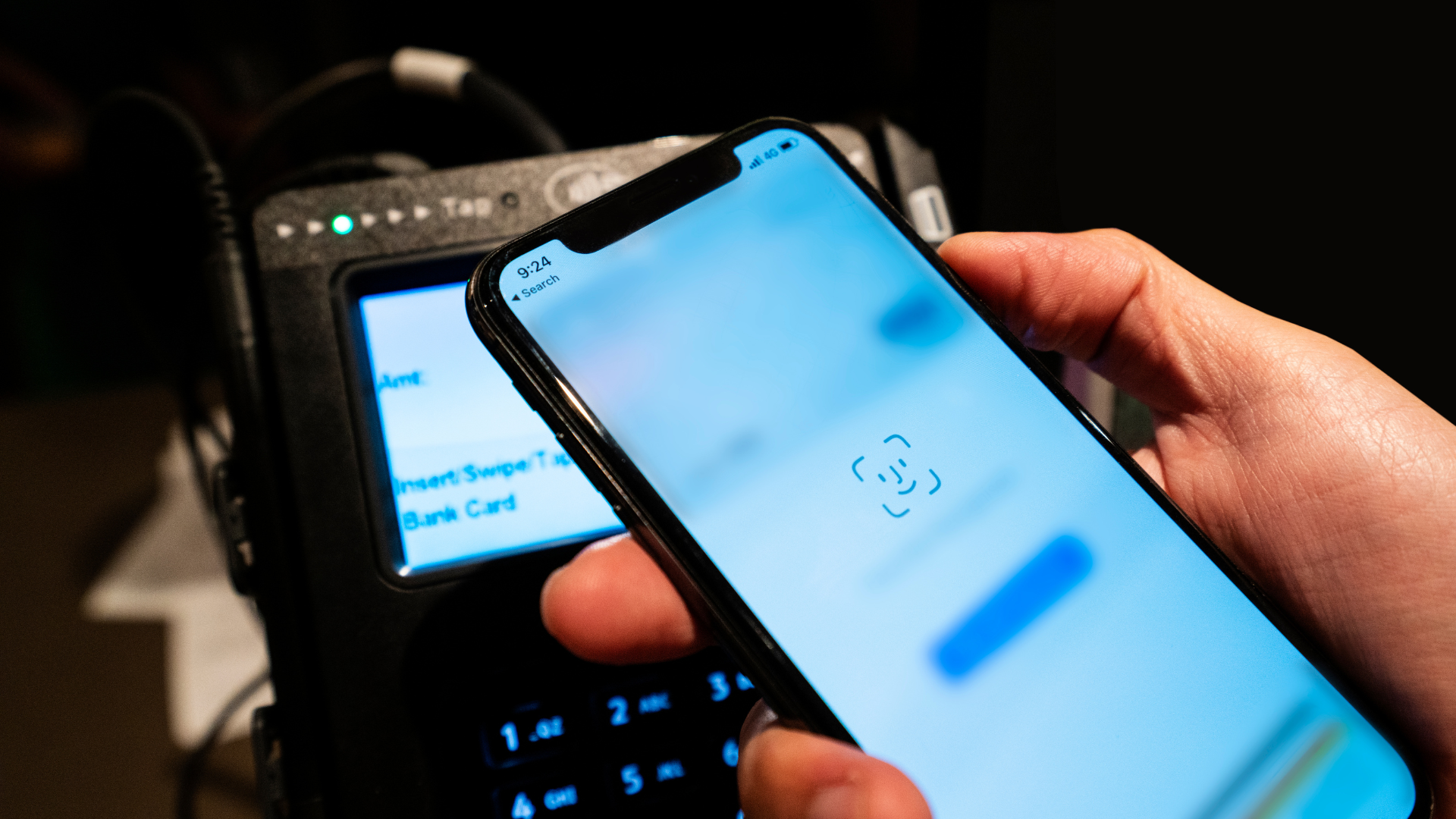These days, the way we buy and sell things is changing fast, thanks to new technology. One big change is how popular electronic payments are becoming, especially payments made with our phones. Instead of using cash or credit cards, we can now pay with just a tap on our smartphones.
Mobile payments are more than just a cool new option – they’re quickly becoming what customers expect everywhere. Whether it’s paying back a friend for lunch, buying groceries while you’re out, or enjoying some online shopping without feeling bad about it, using your phone to pay makes things a lot easier. Let’s dive into the exciting opportunities mobile payments offer and get ready for a future where all our transactions are right at our fingertips.
A standard, not an additional feature. Many people want to pay from their mobile devices
As we witness the rapid evolution of financial technology, it becomes increasingly evident that mobile payments are not just a passing trend but a fundamental shift in the way we conduct transactions. Today, more than ever, consumers are expecting convenience and flexibility when it comes to payments. With the global mobile payment market reaching a staggering valuation of USD 942.3 billion in 2022, it’s clear that this mode has firmly entrenched itself as a mainstream method of commerce.
A significant contributor to this growth is the mobile banking sector, where institutions are actively embracing payment solutions to meet the rising demand from their customers. The allure of instant, hassle-free transactions resonates deeply with modern consumers, who value efficiency and seamlessness in their financial interactions.
Moreover, the remote payment segment, which captured around 60% of the market share in 2022, underscores the increasing reliance on mobile payments for both online and offline purchases. As we navigate this paradigm shift in consumer behavior, it’s essential for banking institutions and businesses alike to recognize and capitalize on the immense potential of mobile payments to drive growth, enhance customer satisfaction, and stay ahead in a market landscape.
The importance of mobile payment solutions in banking
Banking institutions worldwide are recognizing the indispensable role of mobile payment devices in enhancing customer experiences and driving business growth. By seamlessly integrating mobile electronic payment capabilities into their applications, banks can empower customers with the flexibility and convenience they crave in managing their finances. Whether it’s transferring funds, paying bills, or monitoring transactions on the go, the accessibility offered by mobile payment solutions revolutionizes the way customers interact with their banks.
Moreover, with the increasing prevalence of smartphones and the growing reliance on digital channels for financial transactions, the adoption of mobile payment technologies is no longer a mere option but a necessity for banks striving to stay relevant in today’s dynamic landscape. As banking applications continue to evolve into comprehensive platforms for financial management, the seamless integration of mobile payment solutions emerges as a cornerstone for driving customer engagement, fostering loyalty, and securing a competitive edge.
Google Pay and Apple Pay: revolutionizing mobile transactions
Solutions like Google Pay and Apple Pay have emerged as game-changers, revolutionizing the way transactions are conducted using smartphones. One key aspect that enhances the adoption and efficiency of these platforms is the provision and verification process, which ensures seamless integration with banking applications. With the introduction of Finanteq’s Google Pay and Apple Pay SDK (software development kit) banks can now expedite the implementation of these payment solutions with unparalleled ease and efficiency.
Our innovative SDK streamlines the process of provisioning and verifying payment credentials within mobile banking applications, and enables banks to swiftly comply with the requirements of Google and Apple. By offering functionalities such as Apple Pay In-App Provisioning, Apple Pay In-App Verification, Google Pay Push Provisioning, and Google Pay App-to-app Verification, this SDK significantly reduces development time and eliminates the need for banks to invest resources in building these capabilities in-house.
The main benefits for banks are multifold: not only does it save valuable time on development, but it also provides comprehensive know-how documentation, ensuring the highest standards of compliance with Apple and Google requirements. By leveraging this cutting-edge solution, banks can stay ahead of the curve in offering seamless and secure mobile payment experiences to their customers, cementing their position as leaders in the rapidly evolving realm of mobile banking.
Expanding mobile payment devices and methods C beyond NFC
As mobile payment technologies continue to evolve, the landscape is expanding beyond traditional NFC (Near Field Communication) methods, ushering in a new era of innovation and convenience.
One notable trend in this expansion is the integration of alternative methods and technologies that offer enhanced flexibility and security. QR codes, once relegated to marketing campaigns, have now found a prominent place in mobile payments, allowing users to simply scan a code to initiate a transaction swiftly. Bluetooth technology is also making waves in the mobile payment arena, enabling seamless connections between devices for quick and secure transfers.
Moreover, biometrics, such as fingerprint or facial recognition, are revolutionizing authentication processes, providing users with a frictionless and highly secure payment experience.
These emerging trends are not confined to smartphones; wearable devices like smartwatches are also becoming increasingly popular payment methods. For instance, Apple Watch payments are gaining traction, allowing users to make transactions with a simple flick of the wrist. As consumers demand greater convenience and security in their payment methods, the exploration of these alternative technologies is poised to reshape the future of mobile payments, offering users a diverse array of options to suit their preferences and lifestyles.
Payment by watch, or in the future… by a chip?
Smartwatches are now indispensable tools for managing finances on the go. With the advent of Finanteq SmartWatch Starter Kit, banks can harness the power of smartwatch banking to get closer to their customers than ever before.
This innovative solution offers a plethora of core features designed to enhance the banking experience, including precise balance indicators for both accounts and cards, push notifications for important updates and alerts, and geolocation services to easily locate the nearest branch or ATM.
Moreover, the ability to view currency rates, recent transactions, and customize the application branding ensures a tailored experience that aligns with the bank’s unique identity. What sets the SmartWatch Starter Kit apart is its unparalleled deployment speed and cost-effectiveness, enabling banks to enter the realm of smartwatch banking with 90% faster implementation and lower costs compared to traditional app development methods.
Furthermore, the flexibility to accommodate custom changes and updates, as well as the potential for standalone smartwatch functionality, demonstrates Finanteq’s commitment to staying at the forefront of innovation in the rapidly evolving landscape of electronic payments. With smartwatches poised to become an integral part of everyday life, banks that embrace this technology stand to gain a competitive edge by offering customers a seamless and convenient way to manage their finances anytime, anywhere.
Security of online and mobile payments
Ensuring the safety and security of transactions is paramount to instilling trust and confidence among users. With the expansion of smartphones and the increasing reliance on mobile devices for financial transactions, safeguarding sensitive information has become a top priority for both consumers and businesses alike.
One of the key methods employed to enhance the security of mobile payments is tokenization, a process where sensitive data, such as credit card numbers, are replaced with unique tokens that are meaningless to hackers even if intercepted. Additionally, biometric authentication methods, such as fingerprint scanning or facial recognition, add an extra layer of security by ensuring that only authorized users can access mobile payment services.
Moreover, robust encryption protocols and secure communication channels are implemented to protect data transmission between mobile devices and payment processors, safeguarding against interception or tampering by malicious actors. Furthermore, real-time transaction monitoring and fraud detection algorithms continuously analyze payment activity to identify and mitigate suspicious behavior, thereby preventing unauthorized access and fraudulent transactions.
By implementing these comprehensive security measures, mobile payment providers demonstrate their commitment to protecting user data and fostering a safe and secure environment for conducting financial transactions.
Building a comprehensive mobile payment ecosystem in banking apps
Building a comprehensive ecosystem within banking apps is essential to meet the evolving needs of customers and stay ahead in a competitive market. By integrating seamless payment functionalities, such as Google Pay integration and online payments, banking apps can offer users a one-stop solution for managing their finances securely and conveniently.
This comprehensive ecosystem empowers customers to effortlessly transfer funds, pay bills, and make purchases directly from their mobile devices, eliminating the need for multiple apps or platforms. Moreover, by leveraging the power of advanced technologies like biometric authentication and tokenization, banking apps ensure the highest standards of security and protection for users’ sensitive financial information.
Additionally, personalized features such as transaction categorization, spending insights, and customizable alerts enhance the overall user experience, providing valuable insights and empowering users to make informed financial decisions. With a comprehensive mobile payment ecosystem in place, banks can not only meet the growing demand for digital banking services but also foster greater customer loyalty and engagement by delivering a seamless and intuitive banking experience that aligns with the modern lifestyle of today’s consumers.
Conclusion
As we draw to a close on our exploration of the transformative potential of mobile payments in the banking sector, it’s clear that we stand at the precipice of a new era in financial technology. The journey we’ve embarked upon has illuminated the myriad ways in which mobile payment solutions are reshaping the landscape of banking, offering unparalleled convenience, security, and flexibility to users worldwide.
From the ubiquity of Google Pay and Apple Pay to the emergence of innovative technologies like smartwatch payments and biometric authentication, the possibilities are endless. As we embrace this digital revolution, it’s crucial for banks and financial institutions to seize the opportunity to build comprehensive ecosystems within their apps, integrating seamless payment functionalities and personalized features to meet the evolving needs of customers. By prioritizing security, innovation, and customer-centricity, banks can not only stay ahead of the curve but also foster deeper connections with their customers, driving greater loyalty and engagement in an increasingly competitive market.
As we look towards the future, one thing is certain: the journey towards a cashless society powered by mobile payments is well underway, promising a more connected, efficient, and inclusive financial ecosystem for all.








